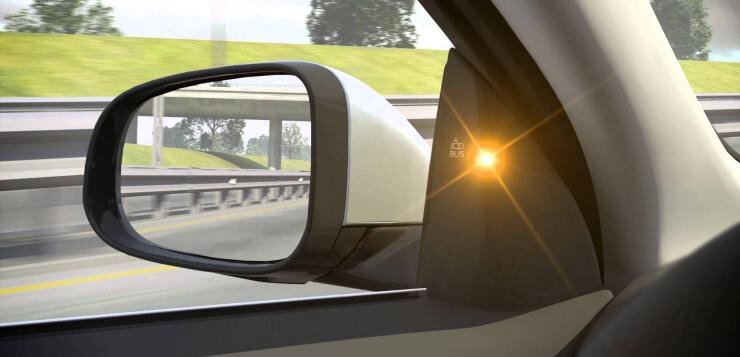Do You Know Your Blindspots?
Image: Shutterstock
Figurative language like analogies and metaphors are great tools for understanding more complex social dynamics. This blog is focused on unpacking the diverse relationships we have with family, friends, strangers and colleagues. I find conversations without examples or parallels that are common language, tend to spiral into negativity rather than blossoming into positive understanding of another person’s point of view. A blindspot is defined as an area that we cannot ‘see’ with our normal ways of looking. The most well known example of the blindspot concept is connected to driving. I remember my driver’s education instructor scaring me to death at 16 years old with the fact that there is an area to the side of a vehicle that cannot be seen with the middle rear view mirror. I honestly did not believe him until he exited the car…walked into my driver’s side blindspot…and disappeared! I have been a fan of my side view mirror ever since. Think of all of our modern day cars, trucks, SUV’s without any side mirrors! Imagine how sharply the amount of highway accidents and deaths would rise. So for decades, a side mirror has been a ‘tool’ that has helped driver’s see what is in their blindspots. We can take that thought one step forward when we acknowledge the recent addition of electronic ‘blindspot indicators’ to newer vehicles. This peripheral flashing lights alerts drivers to the fact that another vehicle is presently in their blindspot. A fantastic advancement in driving safety as even a chronic side mirror checker like myself, appreciates an automatic reminder of the blindspots around me.
So you're telling me I have a blindspot?
Yes. We all have metaphorical blindspots. We all have ways of thinking, points of view and personal biases that prevent us from ‘seeing’ other people. We cannot empathize others if we do not know where they are coming from (just like cars right next to us). From the time we are very young, we digest the social messaging that tells us that we are accepted and normal or lesser and abnormal. These ubiquitous socializing messages have been overtly and subtly constructing how we ‘see’ ourselves and others since we were infants. I say this to emphasize that we are all have some level of sexism, racism, homophobia, etc built into our personal psyches. We all have privileged blindspots that we tend to be defensive about rather than humbling to the fact that they exist.So if we are courageously aware of our inherent blindspots, we can develop behaviours and tools that can help illuminate these areas that are not seen easily by us. Metaphorically checking our side view mirrors when we are interacting with others, ensures that we do not recklessly swerve into their personal lanes. I love the mirror analogy even more when I think about reflecting. Mirrors show us ourselves. A view that we cannot see without the reflective powers of a mirror. Likewise, personal reflection on our societal privileges (blindspots) can develop into a habitual thought process. A well practiced behaviour that allows us to reflect on the biases, assumptions and personal viewpoints that we bring to every interaction we have with other people.To extend the analogy further beyond the usefulness of a side view mirror (aka reflection) is to look at the factory-built blindspot indicator in cars. These electronic sensors within the vehicle alert a driver automatically that a car is approaching their blindspot. This is systemic…standard with most modern vehicles. So when it comes to positive progressive social interactions, there is also a role for governments and institutions to embed automated ‘blindspot indictors’ to their citizens. Social media, television and PSAs messaging could serve as reminders that diversity exists and that we all have blindspots that we must be aware of. This idea of system ‘warnings’ becomes even more functional during the many equity and inclusion discussions we have in our workplaces. The institution that is facilitating any EDI session should create an atmosphere that enables marginalized voices to be heard patiently and without privileged backlash/denial. It should not be left up to the outside presenters to set up this atmosphere…it should be built-in by administrators (like the blindspot sensor within vehicles).
We often talk about ‘safe spaces’ within any kind of social competency workshop. These sessions are often organized in an effort to improve conditions for those who have been historically treated as lesser in our society. There are multiple aspects of this safety concern at work in relationship-building activities. A safe space for those voices that have been traditionally oppressed should be the first priority. A reflective, learning-based compassion for those who are telling these stories of feeling disconnected is required of those in the room who may have ‘blindspots’ towards these perspectives. Safety from being uncomfortable in these environments should not ever be guaranteed to anyone. Instead, the organizers should alert participants to using reflection as a way to see their blindspots in the moment. Why are you feeling angry? Why are you defending yourself? Have I considered a different narrative around race, class and gender? These types of reflective self-questions can serve as a side view mirror…a blindspot indicator. What a great way to avoid emotional ‘accidents’ within these much needed equity and inclusion discussions.


